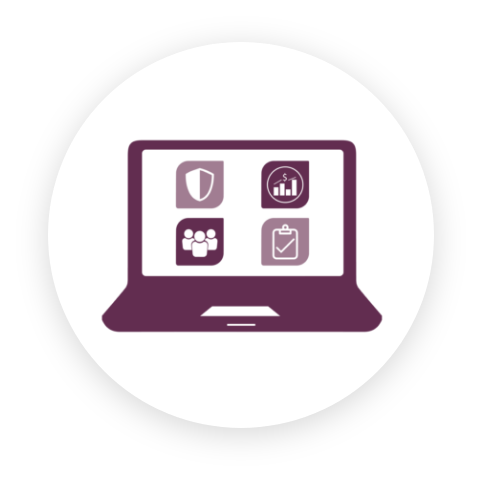Archived FFCRA Exemption Information
[vc_row css_animation=”” row_type=”row” use_row_as_full_screen_section=”no” type=”grid” angled_section=”no” text_align=”left” background_image_as_pattern=”without_pattern” z_index=”” css=”.vc_custom_1601943273437{padding-top: 50px !important;padding-bottom: 50px !important;}”][vc_column][vc_column_text]
NOTE: the information below is not current. We are providing this only for historical reference.
For the latest and most current information, please refer to our FFCRA Exemption Information page.
HR Alert— 9/8/2020
Thus far, the DOL has not updated the “healthcare provider” definition, which means the old definition still stands in most of the country.
Here are some additional points to keep in mind:
1. First, remember that everyone is impacted by this and no one is having fun.
No one is winning in this situation. Children don’t want to be home alone, parents don’t necessarily want to be stuck with their children 24/7, especially if it means no income, and you don’t want your office to suffer. So, a little grace, understanding, communication and working together to find solutions is needed.
2. Discuss “intermittent” FFCRA Family Leave with your employees.
For employees who qualify for FFCRA Family Leave, it can be used intermittently, meaning the employee can work part time and use FFCRA part time. Maybe an employee can work 2 days/week and use FFCRA for the other 2 days. Maybe they can work afternoons and be off in the mornings.
Is this an ideal scenario? No. But it is better than: a) the employee working no days or b) claiming FFCRA exemption, terminating your employee, and then trying to replace them with a total stranger (if you can even find one).
With intermittent FFCRA leave employees might be able to juggle family related needs and still work part time. It could be a win-win for all involved.
While not required, with intermittent FFCRA leave employees can use their regular vacation or PTO to supplement the 2/3rds FFCRA pay and receive full wage replacement. You get to claim the tax credit for the 2/3rds FFCRA pay, and the employee uses vacation or PTO for the other 1/3rd.
3. If you are paying FFCRA leave, consider running your federal payroll taxes more frequently or getting an IRS “advance” of the tax credits. See FAQs #37 – 42 in the IRS comprehensive guide.
4. Important Points:
As we have discussed previously, claiming exemption from the FFCRA does not solve the root problem, which is your employee’s inability to work due to the school/childcare/daycare impacts.
If you have an abundance of available, qualified, workers in your area, then exemption and turnover may be an acceptable path. Many practices, though, are finding it increasingly difficult to find employees willing to work. Before you claim exemption and say goodbye to your employees, explore intermittent leave and gauge the availability of qualified replacement workers in your area.
FFCRA Exemption Update—as of 8/5/2020
Just when we thought there was some clarity about the Families First Coronavirus Response Act (FFCRA) exemption for “healthcare providers,” the plot thickens.
On 8/3/2020, a federal judge in New York invalidated the broader “healthcare provider” definition being used by the Department of Labor (DOL), which included dental offices. This ruling (which, at this time, only affects our clients in New York) will likely have significant implications on who must provide FFCRA paid leave and who might be exempt in the future.
By striking down the DOL’s interpretation of the health care provider definition, this ruling may effectively reverse the FFCRA exemption alert we sent recently. It is unknown at this time how the DOL will respond, i.e. appeal the ruling or revise the FFCRA language to align with the ruling. The timeline is unknown and may be a long legal process.
As a result, employers are left, for the time being, to make their own decision about exemption and risks.
If this is the first time you’re hearing about all of this, please see the section below titled “How we got here.”
So now what?
Here are your current options:
Provide FFCRA Sick Leave and Family Leave for all eligible employees (and potentially roll back any exemption or partial exemption you have claimed).
Claim or continue to claim that you are exempt from the FFCRA, or portions of the FFCRA, until such time as this is resolved, one way or another.
Option #1 represents the safest and the least risky approach.
If you choose option #2, we recommend (again) contacting your local Wage and Hour Division (WHD) of the DOL. As always, and especially given the current situation, be sure to get the name and title of the person helping you, and, if possible, get their advice in writing.
How we got here.
The FFCRA was passed in March 2020 and took effect April 1, 2020. It provides paid sick leave and paid family leave for 6 specific qualifying reasons related to COVID-19. For more information about how the FFCRA works, please see our Guide here.
The FFCRA has always contained 2 separate exemptions:
- The “Health Care Provider” exemption is the one discussed above.
- The “Small Business Exemption” is for businesses with fewer than 50 employees who would suffer financially or operationally by providing FFCRA Family Leave. There are 3 sub-categories with specific criteria. Please see our FFCRA Guide for more details.
Early on, the understanding was that the health care exemption was designed for front-line healthcare workers who were critical to providing life-saving health care during the pandemic.
Later, the DOL issued the following to clarify who is a healthcare provider:
For the purposes of Employees who may be exempted from Paid Sick Leave or Expanded Family and Medical Leave by their Employer under the FFCRA, a health care provider is anyone employed at any doctor’s office, hospital, health care center, clinic, post-secondary educational institution offering health care instruction, medical school, local health department or agency, nursing facility, retirement facility, nursing home, home health care provider, any facility that performs laboratory or medical testing, pharmacy, or any similar institution, Employer, or entity. This includes any permanent or temporary institution, facility, location, or site where medical services are provided that are similar to such institutions.
Despite the phrase “any doctor’s office” it was not clear whether this included chiropractors, optometrists, dentists, and others outside the medical & hospital fields.
In late July, we were able to get unambiguous and consistent information from the DOL that their definition of “any doctor’s office” was as broad and open-ended as it appeared. Dentists and other doctors were exempt, and, therefore, any employee of a dentist was exempt as well.
On July 27, 2020 we issued an alert announcing that all dentists could be exempt if they chose to be. However, that alert came with cautionary thoughts about the potential downsides of claiming exemption.
And now, as of August 3, 2020, we are back in a world of questions and unknowns.
HR ALERT – 7/27/20
IMPORTANT UPDATE: Dental offices are now exempt from having to comply with the Families First Coronavirus Response Act (FFCRA). Even so, we advise caution with this exemption and urge you to read this alert carefully.
The possibility of an exemption for dental offices, with fewer than 500 employees, as “healthcare providers” from having to comply with the FFCRA has been written about and discussed at length.
Typically, for most federal HR compliance issues that single out “healthcare providers,” the definition does not include dentists. For the FFCRA, we sought guidance from attorneys, attended webinars, and read the legislation in depth. Through it all, it appeared the exemption was intended for medical personnel actually on the front lines fighting COVID-19.
Not one source listed dentists, dental practices, or dental employees as part of the exemption. No one was stating, unequivocally, that the above definition included them. The guidance from the Department of Labor (DOL) was either nonexistent or too vague to draw a confident conclusion.
Recently, we’ve been getting some mixed messages from various governmental sources about the definition of “healthcare providers” as applied to the FFCRA. This prompted us to dig further and we were provided with new information that indicated that the DOL is now stating dental practices are exempt under the definition of a healthcare provider.
To verify this we contacted over 10 different regional Wage & Hour Divisions of the Department of Labor (DOL) throughout the United States and specifically asked about the dental office exemption.
The consensus now from the DOL is that the healthcare provider definition for FFCRA is broader, and does include dental offices. From the information we gathered, this broader definition also applies to other healthcare providers such as optometrists and chiropractors.
What Now?
While this information indicates that dental practices can decide to be exempt, it doesn’t mean they have to take that step. In light of this though, a decision to be exempt or not, one way or another, does need to be made.
It is each practice’s choice. One that should be given serious consideration and one that would apply equally and fairly for all employees.
This decision cannot be made by us. It can only be made by each individual employer. Here are some practical steps we recommend:
- Call the Wage & Hour Division of the Department of Labor at: (866) 487-9243
- When prompted, press 1 for Wage & Hour Division
- When prompted, press 0 to speak with a representative
- Enter your zip code (this automatically routes you to the regional office for your state)
- Press 1 if entered correctly
- Press 2 to speak with representative
- Once a representative on the line, tell the person how many employees you have and your type of practice
- Ask whether you are exempt from the FFCRA
- To cover yourself, and assuming the answer you get is “yes”, document the individual’s name that you spoke to as well as the date and time. If you can get the person to put their confirmation of exemption in writing, via email, do that too.
A few additional considerations:
- The FFCRA became effective April 1, 2020 and is currently set to expire December 31, 2020.
- Among its provisions, the FFCRA provides 1) Up to two weeks of Emergency Paid Sick Leave (EPSL), and 2) Expanded Family and Medical Leave Act (EFMLA). Both are provided based on six (6) specific qualifying reasons related to COVID-19.
- These paid leave benefits are funded by the federal government. They run through your payroll and are then credited back via payroll tax credits.
- Claiming exemption does not cause COVID-19 related problems and challenges to go away. Each practice will inevitably still have employees experiencing issues related to COVID-19, whether sickness, quarantine orders, childcare issues or no school.
- When these issues arise, time off will still be needed/necessary – the exemption does not eliminate the
- When time off is needed due to COVID-19, what will be done instead of providing FFCRA leave? Will employees be forced to go without pay? Will employees be able to use their normal PTO/Vacation/Sick Leave? Will employees file for unemployment insurance (which may increase your tax rating)? Will those employees be terminated?
- Employers should ask: ”what kind of work environment do I want to have?” Claiming FFCRA exemption could send the wrong message to employees and create conflict, turnover, and unnecessary hassles.
- IMPORTANT NOTE: There is some flexibility with the exemption. Employers can consider claiming exemption from only part of the regulation. Nothing requires a practice to be exempt from all FFCRA provisions. If up to 80 hours of EPSL is reasonable but up to 12 weeks of EFMLA is not, you can be exempt from EFMLA but not EPSL.
- Note: we strongly discourage claiming exemption for one employee vs another. Two employees in similar circumstances and claiming similar amounts of leave should be treated the same. Avoid claiming exemption with low-performers, for example, or employees that you are trying to force out of the practice. Doing this can increase the chances of morale issues and discrimination claims.
- There is no guarantee that there won’t be legal challenges if the exemption is claimed. Mad employees who believe they’ve been treated unfairly may cause a battle that may never have needed to be fought.
Individual state laws or requirements supersede FFCRA exemption. Already some states, notably Colorado and New York, have enacted leave laws or requirements regarding COVID-19 leave or sick pay, which take precedence over the FFCRA. Be sure to adhere to those rules, as applicable.
Updating Your Policies & Communicating with Staff
Depending on your FFCRA exemption decision, if you currently have a FFCRA policy in your manual/handbook, that policy should be modified or removed.
Employees should be informed of any FFCRA change. We recommend this be done in writing. Click here for sample language for an inner-office memo.
For more information about COVID and the FFCRA, please visit our COVID FAQ Page and review our FFCRA How-To Guide.
For non-medical and non-dental clients who are interested in learning about exemption from the FFCRA, please refer to this information:
- The exemption is not automatic.
- The exemption, if applicable, only applies to employers with fewer than 50 employees.
- The exemption is not “across the board” for the business. It is applied individually per employee, on a case-by-case basis.
- The FFCRA is valid through December 31, 2020. While you might be able to claim exemption now, for a given employee, that may not be the case later this year.
- The exemption only applies to Qualifying Reason #5 (school, childcare, or daycare closure).
- An exemption may exist if:
- The provision of paid sick leave or expanded family and medical leave would result in the small business’s expenses and financial obligations exceeding available business revenues and cause the small business to cease operating at a minimal capacity;
- The absence of the employee or employees requesting paid sick leave or expanded family and medical leave would entail a substantial risk to the financial health or operational capabilities of the small business because of their specialized skills, knowledge of the business, or responsibilities; or
- There are not sufficient workers who are able, willing, and qualified, and who will be available at the time and place needed, to perform the labor or services provided by the employee or employees requesting paid sick leave or expanded family and medical leave, and these labor or services are needed for the small business to operate at a minimal capacity.
- Claiming exemption can cause liability if you get it wrong. An employee can file a claim against you and challenge your assertion. The Department of Labor has been clear that the burden of proof will be on the employer.
If you decide to move forward with exemption, you should carefully and thoroughly document why your business meets the criteria set forth and keep it for at least four years. You do not send any materials to the Department of Labor.[/vc_column_text][/vc_column][/vc_row][vc_row css_animation=”” row_type=”row” use_row_as_full_screen_section=”no” type=”full_width” angled_section=”no” text_align=”left” background_image_as_pattern=”without_pattern”][vc_column][templatera id=”1431″][/vc_column][/vc_row]








